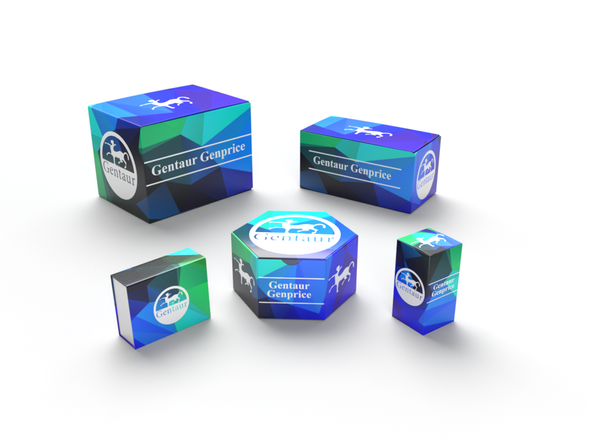Description
Androgen Receptor Antibody [ANDRC-1] | 33-942 | Gentaur UK, US & Europe Distribution
Host: Mouse
Reactivity: Human
Homology: N/A
Immunogen: Recombinant full-length human AR protein was used as the immunogen for the Androgen Receptor antibody.
Research Area: Cancer, Cell Cycle, Signal Transduction
Tested Application: IF, IHC-P
Application: Immunofluorescence: 0.5-1 ug/ml
Immunohistochemistry (FFPE) : 0.5-1 ug/ml for 30 min at RT (1)
Prediluted format : incubate for 30 min at RT (2)
Optimal dilution of the Androgen Receptor antibody should be determined by the researcher.
1. Staining of formalin-fixed tissues requires boiling tissue sections in 10mM Tris with 1mM EDTA, pH 9.0, for 10-20 min followed by cooling at RT for 20 min.
2. The prediluted format is supplied in a dropper bottle and is optimized for use in IHC. After epitope retrieval step (if required) , drip mAb solution onto the tissue section and incubate at RT for 30 min.
Specificiy: N/A
Positive Control 1: N/A
Positive Control 2: N/A
Positive Control 3: N/A
Positive Control 4: N/A
Positive Control 5: N/A
Positive Control 6: N/A
Molecular Weight: N/A
Validation: N/A
Isoform: N/A
Purification: Protein G affinity chromatography
Clonality: Monoclonal
Clone: ANDRC-1
Isotype: IgG1, kappa
Conjugate: Unconjugated
Physical State: Liquid
Buffer: PBS with 0.1 mg/ml BSA and 0.05% sodium azide
Concentration: 0.2 mg/mL
Storage Condition: Aliquot and Store at 2-8˚C. Avoid freez-thaw cycles.
Alternate Name: Androgen receptor, Dihydrotestosterone receptor, Nuclear receptor subfamily 3 group C member 4, AR, DHTR, NR3C4
User Note: Optimal dilutions for each application to be determined by the researcher
BACKGROUND: The Androgen receptor gene is more than 90 kb long and codes for a protein that has 3 major functional domains: the N-terminal domain, DNA-binding domain, and androgen-binding domain. The protein functions as a steroid-hormone activated transcription factor. Upon binding the hormone ligand, the receptor dissociates from accessory proteins, translocates into the nucleus, dimerizes, and then stimulates transcription of androgen responsive genes. This gene contains 2 polymorphic trinucleotide repeat segments that encode polyglutamine and polyglycine tracts in the N-terminal transactivation domain of its protein. [RefSeq]

![Androgen Receptor Antibody [ANDRC-1] Androgen Receptor Antibody [ANDRC-1]](https://cdn11.bigcommerce.com/s-1rdwiq712m/images/stencil/608x608/products/484147/489976/gentaur-genprice__26005.1661610467__29809.1661628092__75433.1661676199__77988.1661684280__64362.1661692443__02085.1662049603__45075.1662119302__91744.1662191540__21580.1662291419__89728.1663498824.png?c=1)
![Androgen Receptor Antibody [DHTR/882] Androgen Receptor Antibody [DHTR/882]](https://cdn11.bigcommerce.com/s-1rdwiq712m/images/stencil/590x590/products/483678/489507/gentaur-genprice__26005.1661610467__29809.1661628092__75433.1661676199__77988.1661684280__64362.1661692443__02085.1662049603__45075.1662119302__91744.1662191540__21580.1662291419__61662.1663498751.png?c=1)
![Androgen Receptor Antibody [SPM335] Androgen Receptor Antibody [SPM335]](https://cdn11.bigcommerce.com/s-1rdwiq712m/images/stencil/590x590/products/483677/489506/gentaur-genprice__26005.1661610467__29809.1661628092__75433.1661676199__77988.1661684280__64362.1661692443__02085.1662049603__45075.1662119302__91744.1662191540__21580.1662291419__52536.1663498751.png?c=1)


